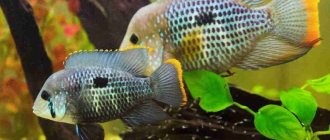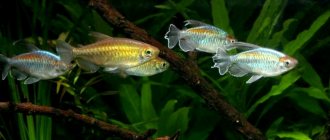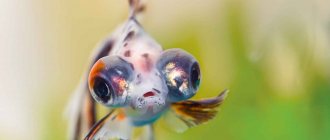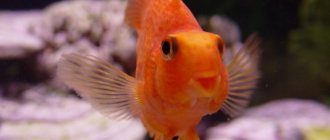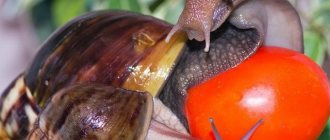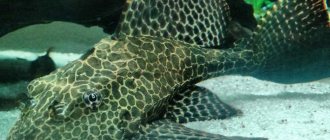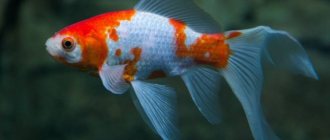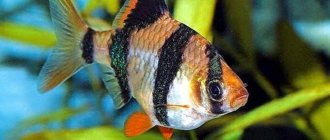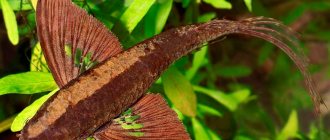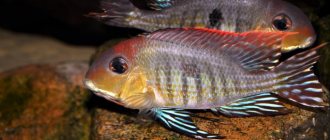The betta fish gained popularity for its unusual appearance and behavior. The fact is that the males of this fish are aggressive, so in Asian countries they took part in battles. Now they are used only for decorative purposes. These aquatic inhabitants are called differently: fighting fish, Siamese cockerels. They are bright and noticeable, but require special care. We will tell you about all the intricacies of this process in the article.
What does it look like and how long does it live?
The betta fish belongs to a large family - macropods. The Latin name sounds like betta splendens. That's why she is sometimes called Betta. First appeared in Southeast Asia. Males grow up to 5 cm, and females up to 4 cm. They have different colors and even combine several colors at once. There are dark stripes throughout the pet's body. The color may change, depending on how you feel. For example, if a betta fish is angry or in spawning season, all the colors on it become brighter and more saturated. This is noticeable in males. Females are always pale in color. They have an oval body, slightly flattened on the sides.
Regardless of gender, all fish are equipped with:
- cycloid scales (rounded);
- rounded tail;
- pectoral processes with pointed tips;
- the lower fin, which extends from the base of the head and reaches the tail.
Aquarium bettas live no more than 3 years.
General information
Southeast Asia is considered to be the birthplace of the fish. Males are distinguished by their pugnacious disposition, which is why they began to be used for tournament fights. For this reason they are called fighting dogs. The species belongs to the macropod family. Belongs to the group of labyrinth fish (individuals have a labyrinth organ that allows them to additionally breathe atmospheric oxygen). Under natural conditions, fish live in stagnant waters or bodies of water with slow currents. Wild individuals are characterized by a grayish color with an olive tint and the presence of stripes on the body. The fins are short and round in shape. The size of the fish is 4-9 cm. Breeders have bred other types of cockerels:
- two-tailed;
- veil-tailed;
- flagtails;
- deltatails;
- crescent-tailed;
- round-tailed;
- crown-tailed;
- racemetails;
- posters;
- dragon;
- royal.
Domesticated aquarium forms of bettas are distinguished by their bright appearance. In the aquarium hobby, these fish are considered the most beautiful. They are characterized by a variety of colors in the red, blue, yellow spectra:
- two-color;
- monochrome;
- multicolor.
The fins of males are longer than those of females. The color of the latter is paler. It is not recommended to keep a male betta in large aquariums with other inhabitants, because in the event of possible skirmishes, the beauty of the fish will suffer; the bettas can attack even calm neighbors with veil fins. It is possible to keep females without long fins with other species of fish. You cannot keep two fighting males together; they will fight. In the water column of a large aquarium, the development of veil fins in fish occurs unevenly. A mini aquarium is a comfortable environment for fighting fish. Cockerels tolerate loneliness well, so you can keep 1 individual separately. The list of requirements for how to care for a small aquarium is smaller compared to maintaining large-sized tanks.
How the fish became a fighting fish
Back in the 18th and 19th centuries, fish fights with the participation of cockerels were held in Siam (present-day Thailand). The fish were chosen for their pugnacious nature. There is a version that the first to notice the tendency of these creatures to fight were children watching the cockerels. They began to catch them, arrange battles and named the winning pet a champion.
Gradually, the adults also became interested and began to bet money on the fish. Gradually, such leisure became traditional throughout Siam, but mainly among the common people. The picture of the whole village crowding around a vat in which cockerels are fighting has become commonplace.
Over time, the fun migrated to noble houses. Traders traveled around the country and neighboring states, carrying fighting fish with them and staging performances. This was their additional income. Fish traveled in clay pots.
Existence in the wild and species
In the wild, they live in polluted waters with a lack of oxygen, since only their respiratory system allows them to live in such places. They breathe with gills and a special organ - the labyrinth. It appeared to them in the process of evolution. Thanks to it, more oxygen penetrates into the blood, so the cockerel does not feel a lack.
All representatives of the popular species are divided into categories. They are:
- single-color: the body is one tone - red, white, green and many others;
- two-color: the body is one color, the fins and tail are another;
- multi-colored: the body and fins of the pet are painted in different colors with many shades.
Sometimes they are Cambodian in color - pale, even white. They also come in one color, often bright red or green.
They can also have a butterfly color. The tail, body, and all fins are the same color, but their tips have a paler shade. Sometimes they are colorless.
We recommend reading
About neon nannakara
Description
The wild form of the cockerel does not shine with beauty - greenish or brown, with an elongated body and short fins.
But now, this is a collectible and the color, as well as the shape of the fins, has such a variety that it is simply impossible to describe it.
It received the name fighting fish because the males engage in fierce fights with each other, which often end in the death of one of the opponents. The wild form is still used in Thailand for fighting, although not leading to the complete destruction of one of the fish.
Despite the fact that fish are fierce fighters, they have a peculiar behavior in a fight. If one of the males comes up for air during a fight, the second one will not touch him, but will patiently wait until he returns.
Also, if two males are fighting, the third does not interfere with them, but waits in the wings.
But the bettas that you find on sale are far from being the same fighting fish as their relatives. No, their character has not changed, they will also fight.
The very concept of this fish has changed, because today's breeds should bring beauty, they have gorgeous fins, so long that they are damaged by the slightest problem, not to mention a fight.
They are kept for their beauty, gorgeous colors and equally gorgeous fins, and not for their fighting qualities.
The fish grows 6-7 cm in length. Life expectancy is short, up to three years, if kept in good conditions.
Other interesting colors
The betta fish also has a marbled color. With it, bright colored spots of different shades and sizes are scattered throughout the body, including the fins. They depend on the age of the individual.
In addition, cockerels sometimes have a piebald color, when the body is bright, monochromatic, and the head is white or completely transparent.
The most exotic are those with the “mask” and “dragon” colors. With the “mask” color, pets are copper, blue, bronze. In this case, the head of the individual is darker compared to the body.
With the “dragon” color, the fish is bright, red in color, and the scales have a copper or silver tint.
According to the varied shape of the fins and tail, the betta fish is divided into the following types:
- tassel;
- crown-shaped
- flag;
- rosetails;
- delta-shaped;
- voile;
- rounded.
Choosing the right pet
If you decide to get this pet, carefully study the following rules that will help you choose a betta fish.
Take a closer look at the fins. If they have wounds or plaque, then you cannot buy such a pet.
Look at the eyes. They should be round and clean.
Examine the torso. Lumps are not allowed on it. They indicate that there are parasites on the body. You definitely shouldn't buy such a pet.
Select one betta fish of a specific gender. It is impossible to keep two individuals in one container. It doesn't matter if they are the same gender or different, the pets will fight. Often in such skirmishes one of the rivals dies.
If you want to buy a male, take a bright one with healthy long fins. There should be a white spot on the female's body. It appears in fish that have reached 3 months. Old people are given away by their low activity. They do not swim, but rather sit on the bottom of the aquarium.
How to equip an aquarium?
Betta fish are considered unpretentious and easy to care for, but some conditions must be met.
Volume
Bettas can be kept in both small (10-15 l) and large aquariums. One individual requires 3-4 liters of water. If the aquarium is large, then it can be divided into several parts by partitions. In this case, several males can be kept in one container at the same time without compromising their health.
The partitions are made of transparent non-toxic material with small holes for water circulation. It is better to plant tall plants next to them to block the fish’s view and reduce unwanted encounters.
Cockerels are capable of jumping quite high out of the water, so the top of the aquarium is equipped with a mesh or lid with holes for air passage
Water
The optimal water temperature is 24-28°C, but the cockerels tolerate a decrease to 18°C quite well. It should be remembered that a long stay in a too cold aquarium is fraught with diseases for them. Control is carried out using a thermometer.
Cockerels are undemanding to the quality and composition of water. Nevertheless, it is better to adhere to the following limits: hardness 4-15, acidity 6.0-7.5.
To prevent illness and reduce stress, it is recommended to use table salt (half a teaspoon per three liters of water).
A prerequisite is regular water replacement. In large aquariums it is carried out once every two weeks, and in small aquariums - once every three days. It is imperative to remove all remaining food from the bottom.
Air
The cockerel is a labyrinth fish, that is, it breathes not only with gills, but also with an additional special organ - the labyrinth apparatus. In it, the blood is saturated with air, which the fish captures with its mouth. Therefore, aeration is not very important for cockerels, but it is advisable to install a filter. It can be of low power, since these fish do not like strong currents.
It is also important that the surface of the water is not completely overgrown with plants, so that the betta can rise to the surface and take in air. Sometimes it happens that a bacterial film forms on the surface of the water. It needs to be removed. This can be done using a sheet of paper, placing it on the surface of the water, and then removing it along with the film.
Priming
For cockerels, river sand or gravel is quite suitable. Before placing it in the aquarium, it must be calcined or washed under running hot water.
Plants
In an aquarium with bettas, you can use both artificial and live plants.
When choosing artificial plantings, special attention should be paid to the absence of sharp edges, on which the bettas can damage their fins. The best option is silk plants.
However, live greens are still better, as they help maintain biological balance in the aquarium. It should occupy at least a third of the space. Living plants need to be looked after - thinned out in a timely manner, and rotted leaves removed. They are planted in the ground or in special pots.
Decorations and lighting
Cockerels love to swim between various obstacles, so shelters made of stones, driftwood, grottoes, etc. would be quite appropriate. The main thing is that all decorations should be free of sharp edges and environmentally friendly.
Do not install the aquarium in direct sunlight.
How to properly maintain and choose neighbors
Although the betta fish is not too difficult to care for, the place in which it is kept must meet certain requirements.
You need to choose an aquarium with a volume of at least 3 liters. But if you will keep two or more individuals in one place, you should give preference to a long aquarium. This way the pets can each get into their own corner and not conflict. If you don’t have one, you can take an ordinary suitable vessel, but then the fish should be separated by glass partitions.
Neighbors for a betta in an aquarium must also be selected carefully.
LAUNCHING AN AQUARIUM FOR COCKER FISH
Aquarium
- a complex closed ecosystem in which not only fish and plants live, but also a huge number of living microorganisms that constantly interact with each other. And this has nothing to do with the size of the aquarium and the number of fish living in it. Our task as aquarists is to establish and maintain biological balance in the aquarium.
So, let's start launching the aquarium.
Step 1. Selecting a location for the aquarium
Choosing a location for an aquarium is an important step, since its future well-being depends on it.
The aquarium should not be placed in direct sunlight, as this can cause algae in the water and overheating in the summer. It is not recommended to place the aquarium on a windowsill, next to heating devices, or with doors. Temperature changes and drafts are also not allowed.
Step 2. Choosing an aquarium
So, we have found a suitable place, now it’s time to move on to choosing an aquarium.
The choice of an aquarium depends on many factors:
- the place where it will be located,
- what decorations do you want to use for the aquarium?
- Will the cockerel live alone?
- Do you plan to install any equipment ( filtration, light, heating, etc.
).
Also, do not forget about personal preferences; you should like the aquarium, fit the interior of the room and be convenient during use.
Aquarium size
In different sources you can find different recommendations on the volume of an aquarium for a betta: 4, 5, 10 and even 20 liters. Also on the market you can see a huge selection of special “aquariums for bettas”, usually with a volume of 1.8 to 10 liters.
When choosing a home for a fish, aquarists are guided by the following rule :
the aquarium should be spacious enough and free to move so that the betta can calmly turn around without limiting his movements.
10–20 liters
is considered the most optimal .
But if only a betta will live in the aquarium and the space in the room where you plan to put it is limited, then you can consider small tanks of 3.5 - 5 liters
.
When choosing an aquarium, keep in mind that the smaller its size, the more difficult it will be to maintain the balance of the aquatic environment in it; it will become polluted and saturated with organic waste much faster. It is also difficult to place decorations and plants that the betta loves in a small container.
If you plan to introduce fish other than bettas into the aquarium, then it is better to choose a volume larger than 20 liters
.
And do not forget that not enough free space in the aquarium leads to various diseases and other negative consequences.
Diseases of betta fish, prevention and treatment methods
Aquarium shape
The shape of the aquarium can be any:
rectangular, square, round, cubic, triangular, hexagonal, cylindrical, in the form of a glass, jug, divided into several zones, etc. On the market you can find aquariums for every taste.
In fact, what matters for the fish is the volume of the container, not the shape. Therefore, the shape of the aquarium is chosen depending on personal preferences and the design of the room where the aquarium will be located.
But in addition to the beautiful design, pay attention to how convenient it will be to care for the aquarium.
Typically, an aquarium for a betta is chosen to be rectangular or round in shape. It is worth noting that a round or glass-shaped aquarium looks original, but it is believed that it negatively affects the betta’s vision. Rectangular aquariums are considered to be the most comfortable. Although they are the simplest in appearance, there will be more space for movement; easier to wash; it is easier to maintain water parameters, maintaining a stable biobalance; you can install various decorations and plants; you can place the necessary equipment by attaching it to the walls.
Special aquariums for bettas
Many manufacturers offer special aquariums for bettas. These aquariums are usually round, rectangular or square in shape. Special aquariums for betta fish are perfect for small spaces and will fit into any interior of an apartment or office; they are easy to move.
These aquariums are immediately equipped with a lamp ( LED lighting
), filter, water thermometer and even decor.
But there are several disadvantages to such aquariums. Firstly
, the cost of finished aquariums is quite high.
Secondly
, they are usually very small in size and suitable for keeping only one betta.
And thirdly
, you overpay for the lamp, since the cockerels do not need lighting.
Having chosen a suitable aquarium, check the quality of the seams to ensure that there are no air bubbles, chipped silicone or other defects where the glass is glued. Inspect the glass cuts; they should not be sharp or have burrs.
Step 3. Selecting equipment for the aquarium
Due to the anatomical features of the structure of the respiratory organs, the cockerel does not need filtration and aeration of water.
Therefore, a mini aquarium for the normal functioning of a betta does not require equipment. Aquarium cover
There is no additional need to equip the aquarium with a lid. If the aquarium is already equipped with a lid, then it should always be slightly open, since the betta must be able to float up and swallow atmospheric air.
Who to share with and who not to live with?
It is strictly forbidden to breed a Siamese cockerel with astronotuses, piranhas, lineatuses, tetraodons, and acaras.
Acceptable are zebrafish, ternetia, barbs, minor, platie, swordtail, rasbora, ancistrus, congo, brocade catfish, otocinclus, pulchrypinnis.
The homeland of the betta fish is the tropics, so the temperature in their aquarium should not fall below 24 or 28 degrees.
Don't plant a lot of vegetation. Plants should also not float on top of the water. The Siamese betta needs to have some free space on top so that he can rise up and gasp for air. But houses and driftwood are welcome; the aquarium is kept in natural light for 3 hours a day.
Caring for a betta fish is difficult for some people in one respect: the water must be changed frequently. Every three days, if the container is small. If your pets’ home is spacious, then every 14 days.
Compatibility
The issue of compatibility is individual, and it all depends on the temperament of the fish. Male bettas do not get along with each other, and females may have a hard time either. If she does not suit the male, he can easily kill her, and on the contrary, some females pose a danger to unwanted gentlemen. The thing is that in nature these fish only come into contact during spawning, and most breeders agree that until the male builds a nest, the female has nothing to do next to him.
All fish can be divided into several groups according to their compatibility with cockerels:
- swordtails, platies, mollies, peaceful catfish, thornets, rasboras, grumbling gouramis, minors, etc. get along well;
- fights may occur with tails being torn off if these are neons, guppies, cardinals, barbs, spotted gouramis, marbled and pearl gouramis, labeos, etc.;
- Astronotuses, piranhas, parrots, lineatuses, tetraodons, acaras, etc. do not get along at all.
Can a pet live in cramped conditions?
The fish lead a sedentary life, so they can exist in a vessel with a volume of 4.5 liters or more. It should not be covered with a lid, since the bettas need to breathe regular atmospheric air. Also, the aquarium does not require additional filtration and aeration. The only thing that needs to be installed in it is a heater.
Put some soil on the bottom, any soil will do. You can also install small decorations and artificial plants. Large algae are not used for such aquariums. Settling is easy: place a jar with fish next to the aquarium, wait until the temperature in both containers becomes the same. Next, the pet is released into a new home.
We recommend reading
What fish can live without a filter and oxygen?
The acidity of the water is exactly 7 pH. Both smaller and larger values are harmful to the cockerel. To monitor the indicator, buy a special device at a pet store.
Preparing a mini-aquarium and populating it
Experienced aquarists recommend choosing only spacious aquariums for betta fish; 1 individual should have at least 5 liters of water. The recommended optimal tank volume is from 10 liters. The main criteria for arranging a mini-aquarium:
- The correct choice of aquarium shape is important. It is often practiced to keep a betta in a round aquarium; sometimes jars, glasses or glasses are used. In the last three options, the pet has nowhere to turn around and may die. The round shape of the container is inconvenient to handle; such an aquarium cannot be cleaned with a scraper. Some sources indicate that keeping them in a round bowl is harmful to your pet’s vision and health. It is better to keep your pet in a rectangular container.
- The fish’s home cannot be tightly closed with a lid, since it must remain possible to rise to the surface of the water and breathe. To prevent your pet from jumping out, it is better to use a soft mesh.
- There is no need for aeration and filtration systems due to the peculiarities of the respiratory system of cockerels. The only accessories you should purchase are a small water heater.
- A small amount of soil should be placed at the bottom. For this, any type of gravel, stones, glass beads, balls are used. Items must be free of chemical residues.
- After arranging the soil, plants and small decorations are placed so that they do not interfere with the movement of the fish in the water space. It is better to use artificial plants in a small aquarium, but they should not injure the betta's fins with sharp edges. Live aquarium plants look more beautiful, but in small spaces they quickly spoil the water under the influence of heat, sunlight and other factors. It is best to choose plants made from silk.
- Filtered drinking water is poured into the tank. Distilled water is not suitable because it lacks the minerals your pet needs. Tap water should be dechlorinated first.
- Before introducing your pet into the prepared aquarium, you need to leave it for 24 hours.
- It is recommended to place the aquarium in a quiet place where it is not hot and there is moderate lighting. Intense sunlight will provoke the growth of green algae, the proximity of heating devices will affect the water temperature, and the noise will cause stress to the betta, and fin rot may begin.
A pet bought in a store is placed in a container next to a furnished home so that the water in the containers becomes the same temperature. After this, the container with the fish is lowered into the tank so that the fish can move on its own. You can transfer the fish using a net.
We provide a full table
As in care, the betta fish is not picky about food. She can be fed both fresh and frozen food. Most often they give bloodworms. In addition to this they offer:
- worms;
- mosquito larvae, tubifex;
- Artemia;
- rotifer;
- Daphnia.
You can also purchase food at a pet store.
You should feed your betta betta fish as much food as it will eat in 5 minutes. The remaining food must be removed. Feed your pet once a day.
Once a week they do not give any food, and you should not overfeed the fish: they are prone to obesity.
In the wild, lively cockerels prefer to eat more live food - small mosquito larvae and daphnia. They do not disdain algae, which is why they sometimes bite aquarium plants.
Maintenance and care
Aquarium bettas live no more than three years. The betta fish is unpretentious in care. These fish thrive at temperatures of +24…+28ºC. The water temperature should not drop for a long time, otherwise the fish will get sick. Temperatures above normal speed up metabolic processes, shortening the pet's life. For the owner of a betta fish, maintenance and care comes down to basic rules:
- Feeding is carried out in small portions 1 or 2 times a day. It is unacceptable to overfeed the fish. The diet includes live (brine shrimp, earthworm, tubifex, bloodworm), dry and frozen food (rotifer, brine shrimp, daphnia, bloodworm). It is recommended to give as much food as the fish can eat in 15 minutes. If you feed more, your pet will get fat and get sick. Any food that falls to the bottom should be removed immediately to prevent the water from spoiling.
- The fish is not picky about water parameters. It is recommended to maintain acidity from 6 to 7.5, and hardness in the range of 4-15. There are no strict requirements.
- In a mini-aquarium, the water must be changed frequently. Due to the lack of filtration, ammonia and pet waste products accumulate in the water. With a volume of 4-5 liters, the contents change every 3 days, with 8 liters - every 5 days, with 20 liters - weekly.
- Every time you change water, you should clean the walls of the tank and decorations. Dirt and green algae are removed. If there are live plants in the aquarium, it is necessary to trim off dead areas. When washing the fish’s home, you should not use soap or other detergents, as the slightest traces of chemical compounds will enter the fish’s digestive system.
You need to monitor your pet's fins and behavior. If signs of unwellness appear, you should change the water; in many cases this is enough. Often the fish are kept alone, without the practice of breeding cockerels. Under such housing conditions, it should be remembered that females can leave eggs inside themselves. In the absence of spawning, the accumulated eggs turn into a cyst, which can cause the fish to die. In the initial stages, dietary restrictions help. Expressing the eggs is sometimes practiced, but the procedure requires great care, otherwise the fish may be harmed. A breeding pair for cockerels is carefully selected. The compatibility of different types is taken into account. When crossing some forms, defects may appear in the offspring. For spawning, individuals older than 4-5 months are selected. Reproduction of cockerels is not carried out more than once every 2 weeks. A reservoir (from 10 liters) is being prepared, which is enriched with shelters and vegetation. 10-14 days before spawning, the cockerels are seated. The first to be placed in the spawning tank is the male, who begins preparing the nest from air bubbles. Small bubbles aggregate on the surface of the water or under vegetation. The female sits down, after courtship, she releases eggs, which are picked up by the male cockerel. He will protect the offspring and raise fallen eggs to the nest. The female does not participate in raising the fry. After spawning it is removed. If you keep your betta fish in compliance with simple rules, it will not get sick, allowing its owner to enjoy its beauty.
Fishes that “make” a nest
You can breed fish when they have reached 6-8 months. At this age, they can independently build their own nest from pieces of algae, their own saliva and air bubbles.
During the spawning period, it is advisable to place each fish in a separate jar. Its volume should be 4-5 liters, no less. The height of the water from the bottom is 10-15 cm.
It is also advisable to put some plants in this jar. Water temperature – from 28 degrees.
There is no need for aeration. It is also advisable to cover the aquarium with your betta from sunlight.
The breeding process is carried out as follows: the owner puts the male in a separate container, where he will build a nest, and after 1 day the female is placed in the jar. In 2-3 days the fish will begin their spawning period.
If mating does not occur, then you can try placing another female in the jar. Fresh water added to the jar also helps activate the process. Monitor the behavior of the male: if he is aggressive, replace him with another.
Reproduction
Among two individuals of bettas, it is easy to distinguish between a male and a female: the one who attracts attention with its bright coloring, large size and large fins is almost certainly a male. Betta girls tend to be “more modest.”
Two individuals aged 6-8 months are suitable for breeding. It is better to place the pair in a separate 4-5 liter aquarium, at least 15 cm long. The spawning tank is filled with water to 10-15 cm, a couple of plants with small leaves are placed in it, dim light and aeration are provided. The water must first settle for 3-4 days, and its temperature in the aquarium should be raised to 28-30 degrees.
Be sure to install a place in the aquarium where the female can hide from an aggressive male, for example, a grotto.
Before spawning, the female and male are separated and prepared for fertilization. It is advisable to raise the water temperature by 1-2 degrees, and add live and frozen food with a high protein content to the diet. Such conditions must be maintained for 10-14 days so that the males form eggs and milt and are ready for spawning.
The male is placed first in the spawning tank so that he can build a nest from air bubbles, his own secretions and small particles of algae. Then the female joins him and “appreciates” the efforts of the groom. If everything suits her, she takes up spawning. At this time, the male follows the female, squeezing the eggs out of her and immediately fertilizing them.
When spawning ends, the female is placed separately. The male places all the eggs in the prepared nest and begins to care for them. The caring father returns the eggs that have fallen from the nest to their place. At this time, it is very important to install a good source of lighting above the aquarium so that the betta fish does not fall asleep at night. Otherwise, eggs that accidentally end up outside the nest will die.
The incubation period lasts 1-2 days, then the larvae appear. They are able to feed on the contents of their yolk sac for another 3-4 days, and then swim out of the nest in search of food. As soon as the fry begin to leave the nest, it is better to remove the male from the aquarium.
It is better to feed the fry “live dust”, ground egg yolk, and introduce cyclops nauplii and brine shrimp into the diet. It is not recommended to give dry food.
At three weeks of age, the fry are sorted: the large ones are separated so that they do not eat the smaller ones. When the fry are one month old, you can remove the aeration: it is at this time that the labyrinth apparatus is finally formed.
As soon as the newly born fish begin to show aggression towards each other, they are seated and begin to be kept like adult males.
Birth of fry and care for them
After spawning, the female gradually releases eggs, after which the male fertilizes them with milt. After 5 days, fry emerge from the eggs. They actively swim in the bank.
Dad takes care of the family nest while the eggs are maturing.
After the babies appear, it must be removed from the jar, because, obeying its instincts, it will try to drive the fry back into the nest and will crush them.
The female is removed from the aquarium immediately after laying eggs, otherwise the male will fight with her.
Aeration is established in the bank. At first, the fry do not have a developed labyrinth organ, so they need air.
Newborns need to be fed ciliates and boiled chicken egg yolk. After 2 days, they begin to offer ground brine shrimp larvae.
After 2 weeks, the young animals are treated to regular food. The fry can be moved to a larger house.
What diseases do they suffer from?
The aquarium betta fish rarely suffers from diseases. However, she develops fin rot. They become infected with this disease from aquarium fish carriers. Bettas can also become infected through plants and food. If the disease is not treated, the infection will spread further and affect the body, tail of the fish, and entrails.
Betta fish also get sick with trichodinosis. Pathogenic, harmful cells enter the aquarium through algae, from the soil, through food, and contact with other sick fish. The infection quickly spreads to the skin and gills. The sick individual stays near the aerator, rubs against the walls of the aquarium, stones, soil, and a white coating appears on the body. If the owner does not monitor and treat a sick fish, it may die.
We recommend reading
Astronotuses: care and maintenance
Diseases
One of the most common diseases among bettas is fin rot. It is caused by a specific bacterium that enters an aquarium with poorly treated soil, live food or sick fish. With this disease, the tail and fins droop and become as if scorched at the edges. If left untreated and the disease progresses, the fish may lose its tail and fins.
Other very common ailments for bettas are dropsy, fungal skin lesions, oodiniosis, ichthyophthyriasis and fish tuberculosis.
Insidious velvet disease
Betta fish may develop “velvet disease” caused by a parasite. It attaches to gills and areas of skin. The parasite can remain dormant on the fish's body for 3-6 days. After this, it leaves the betta fish and enters the water in the form of a cyst. About 250 spores are formed in such a cyst.
Signs of “velvet disease”:
- mucous ulcers and a white coating that looks like flour appear on the body;
- the pet pulls its fins towards its body and rubs against the ground;
- the fish is lethargic and has no appetite.
If the owner did not recognize the disease in time and did not treat the betta aquarium fish, it will die, and the infection will enter the aquarium and the rest of the fish will become infected with the disease.
How to treat a fish
Initially, it needs to be planted in a separate container. Thanks to this, the pet owner can freely add a medicinal solution to the water and not be afraid that it will cause discomfort to other fish.
Next, take streptocide or the purple “K” preparation.
How to breed?
- We take 20 grams of streptocide and dilute it in 100 liters of water. The composition is poured into the aquarium.
- Dilute 0.1 grams of the drug purple “K” in 1 liter of water. Next, pour 15 grams of the solution into 10 liters of water. We add the resulting composition to the aquarium.
The following recipe also helps: dilute 20 grams of table salt in 10 liters of water, and keep the betta fish in this solution for 20 minutes. Repeat for 10 days.
Interesting facts about your pet
The betta fish is aggressive if circumstances force it. She can fight even with her reflection in the mirror to the point of complete exhaustion. Needless to say, placing an aquarium next to a mirror is dangerous?
During the spawning period, these fish show their sympathy for the female in a certain way: the males inflate their gills, protrude their fins, and wriggle their whole body. The females begin to actively fidget back and forth on the bottom, attracting individuals of the opposite sex.
Betta fish sometimes need to sleep, but this fact is not easy to notice. If you cannot tell whether a fish is sleeping, then know: you can recognize their sleep by the following signs. The fish freezes for a long time in the thickets, behind a snag or other secluded place. It can also simply hang in the water column. Sometimes the fish lies on the bottom of the aquarium or turns on its side to sleep. Usually pets sleep in the evening when it is dark, but if the owner comes into the room and turns on the light, the fish quickly comes to life and returns to its previous rhythm of life. Betta fish do not have a deep sleep phase.
Some useful tips
If you want your fish to live longer, then carefully read the rules below.
Do not pet your pet very often. Although the fish allow you to do this, you should not get carried away. The fact is that their scales contain a special protective mucus, which disappears with frequent stroking. Because of this, the fish becomes vulnerable and susceptible to various diseases.
From time to time the cockerel lies down on the bottom of the aquarium. If he does this infrequently, then there is no reason to worry. But if the pet begins to cling to the bottom constantly and this behavior continues for several days in a row, then the owner needs to consult a specialist and examine the pet.
Leave the aquarium water for at least 3 days. Tap water with chlorine is harmful to betta fish.
Have you ever had any cockerel fish? If yes, then we are waiting for your comments on the article. Share interesting information with your friends and rate our material by liking it.

